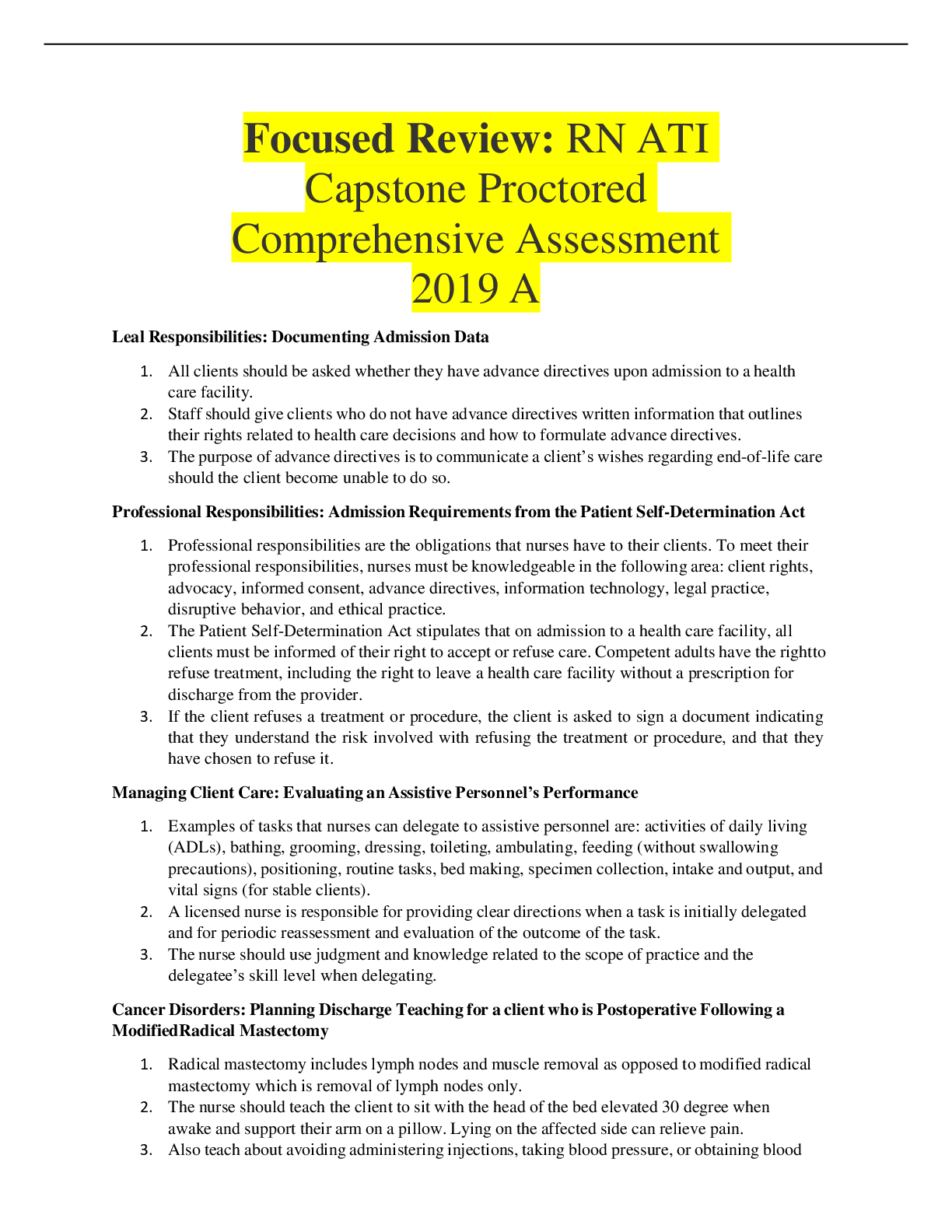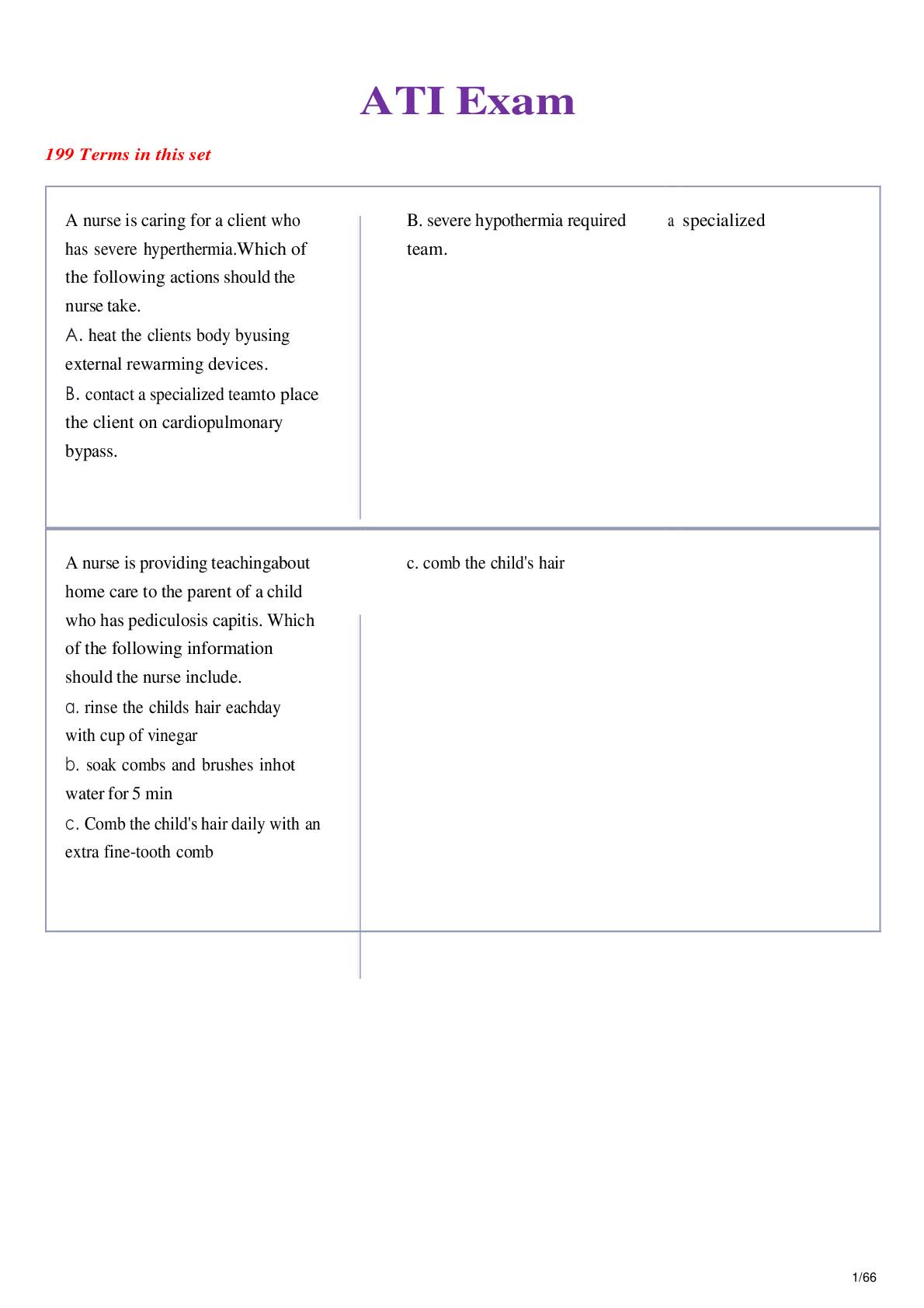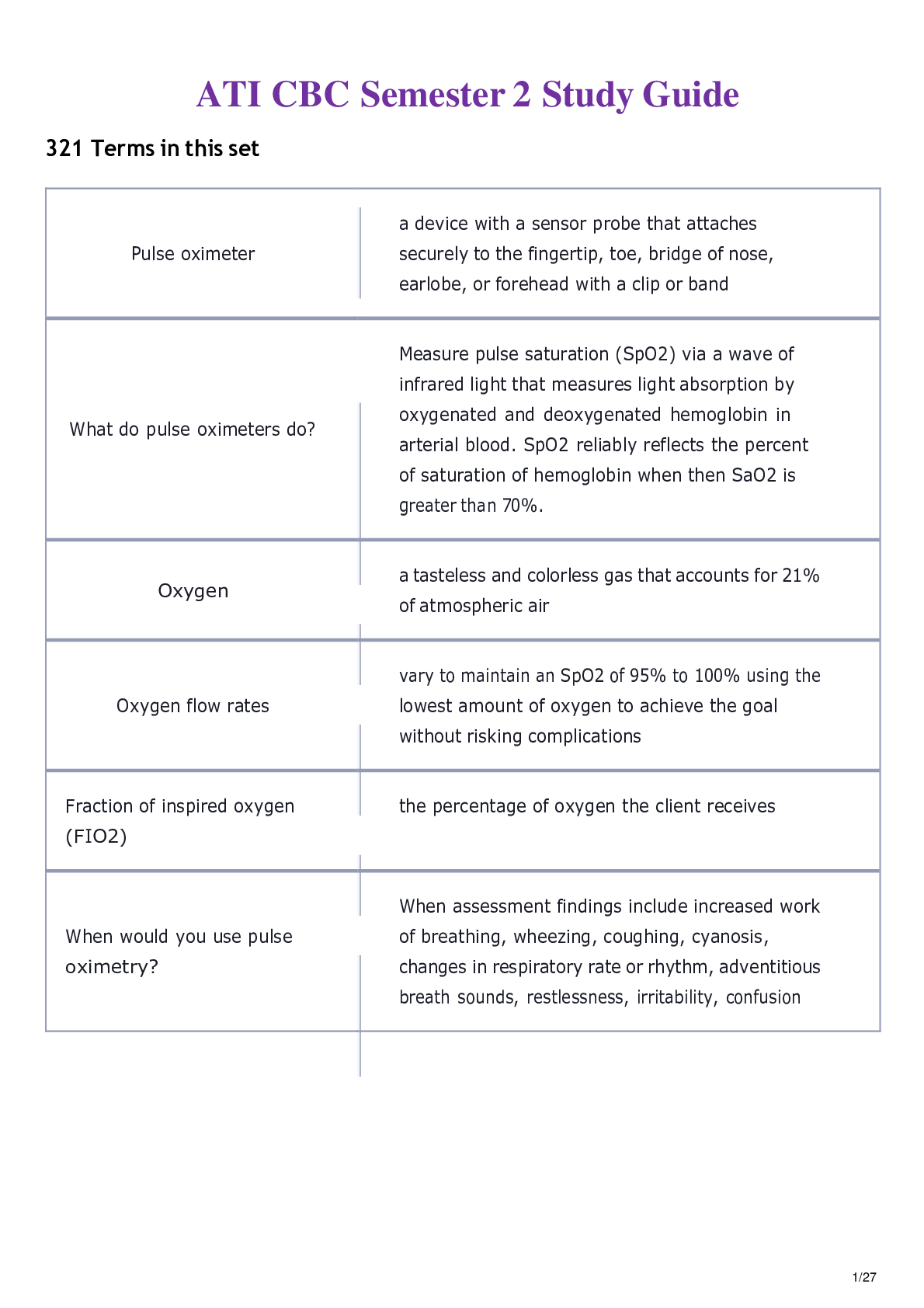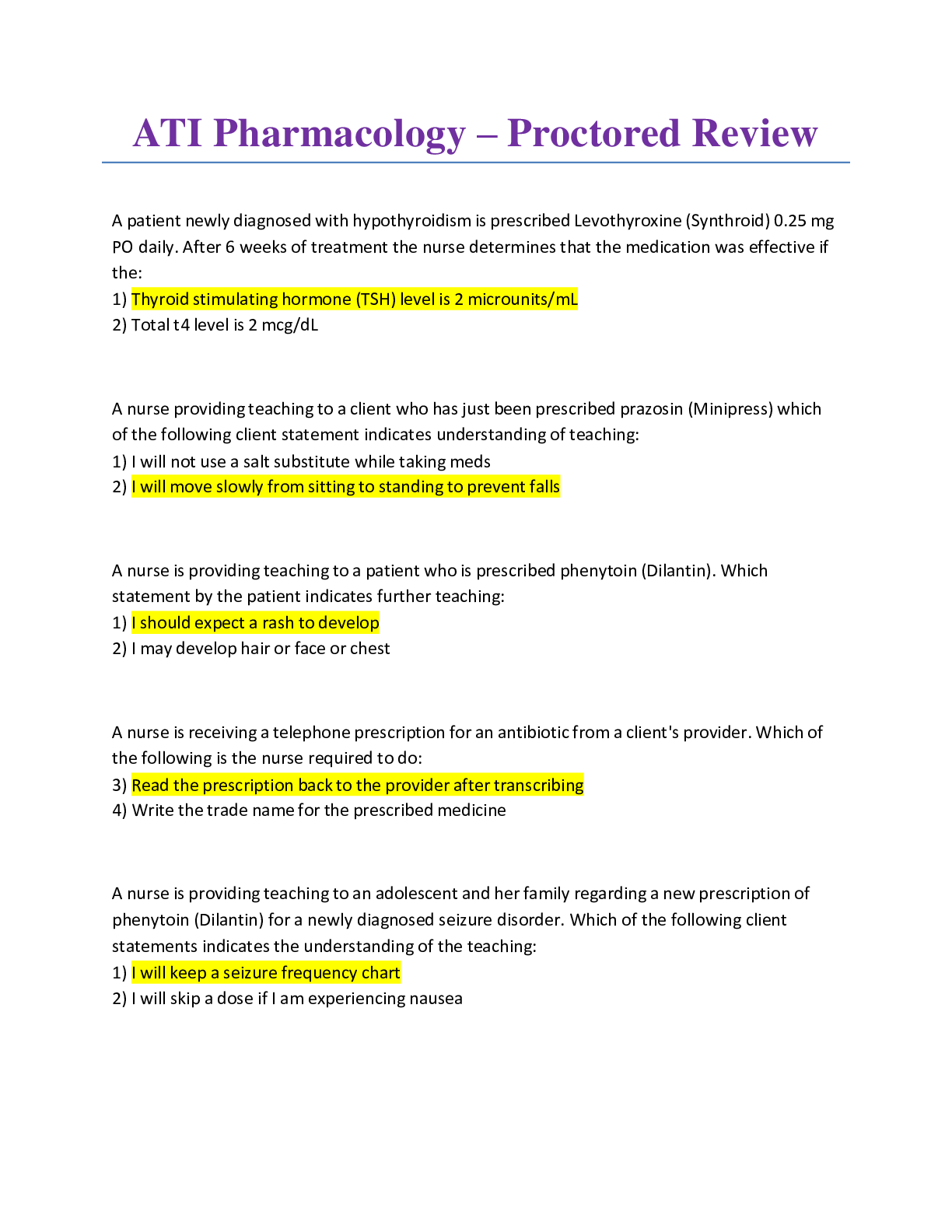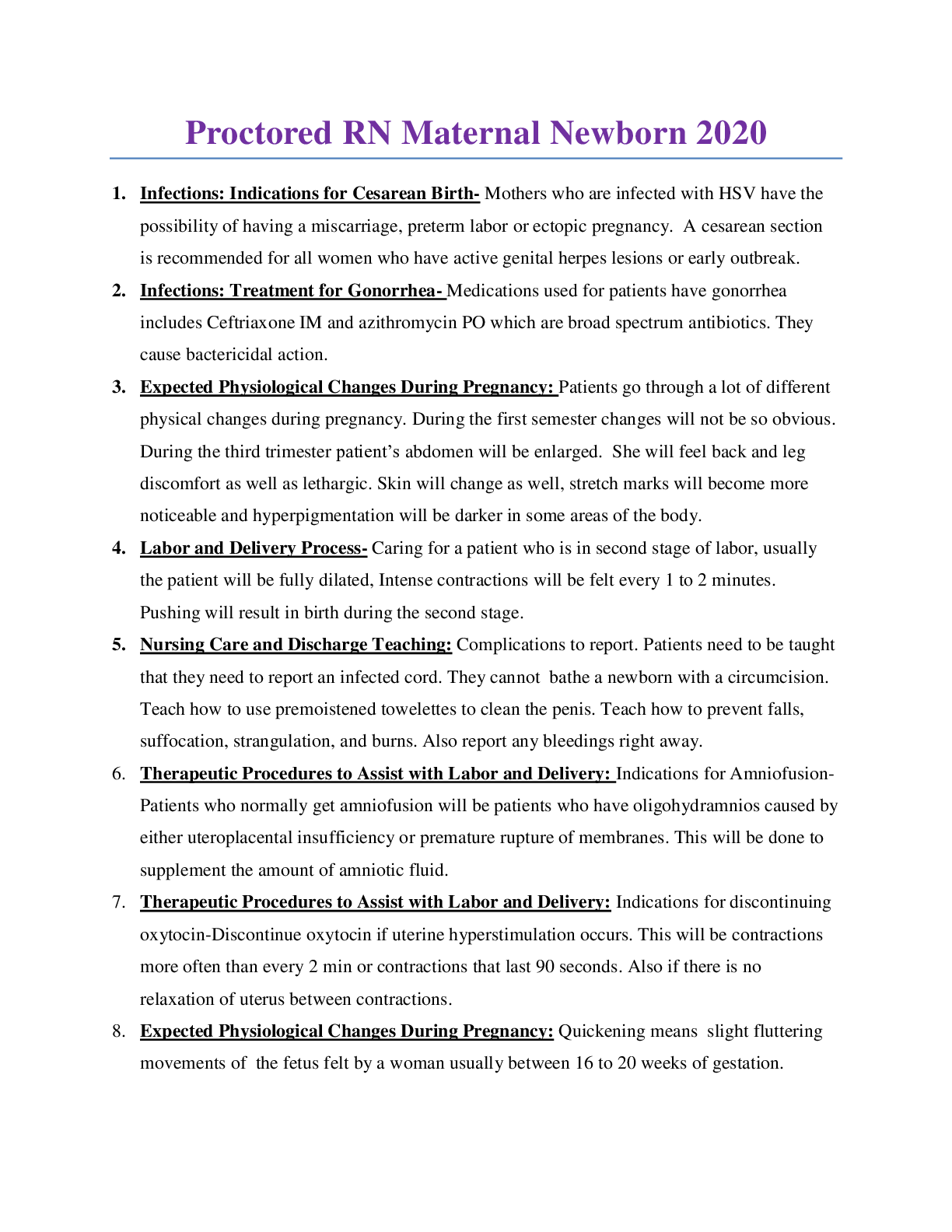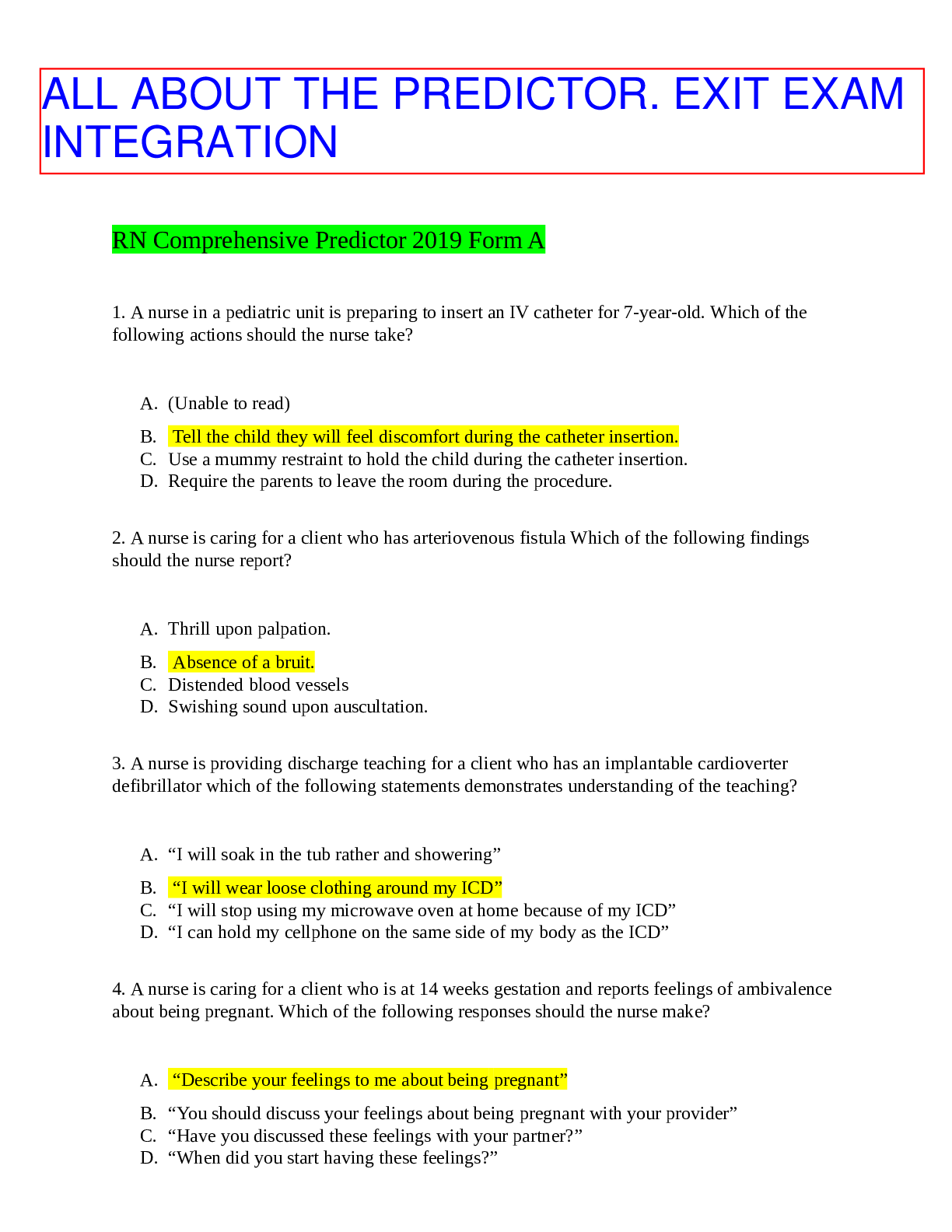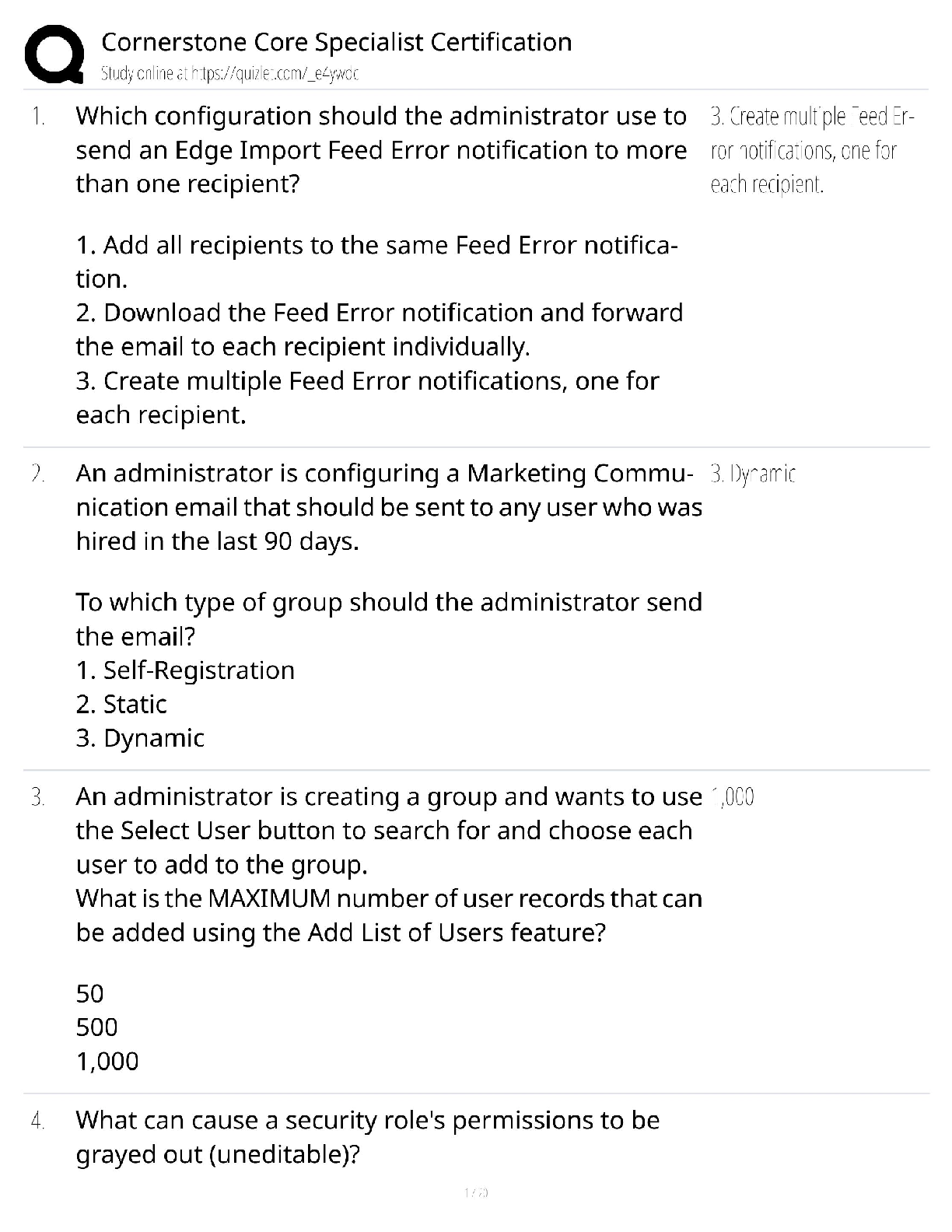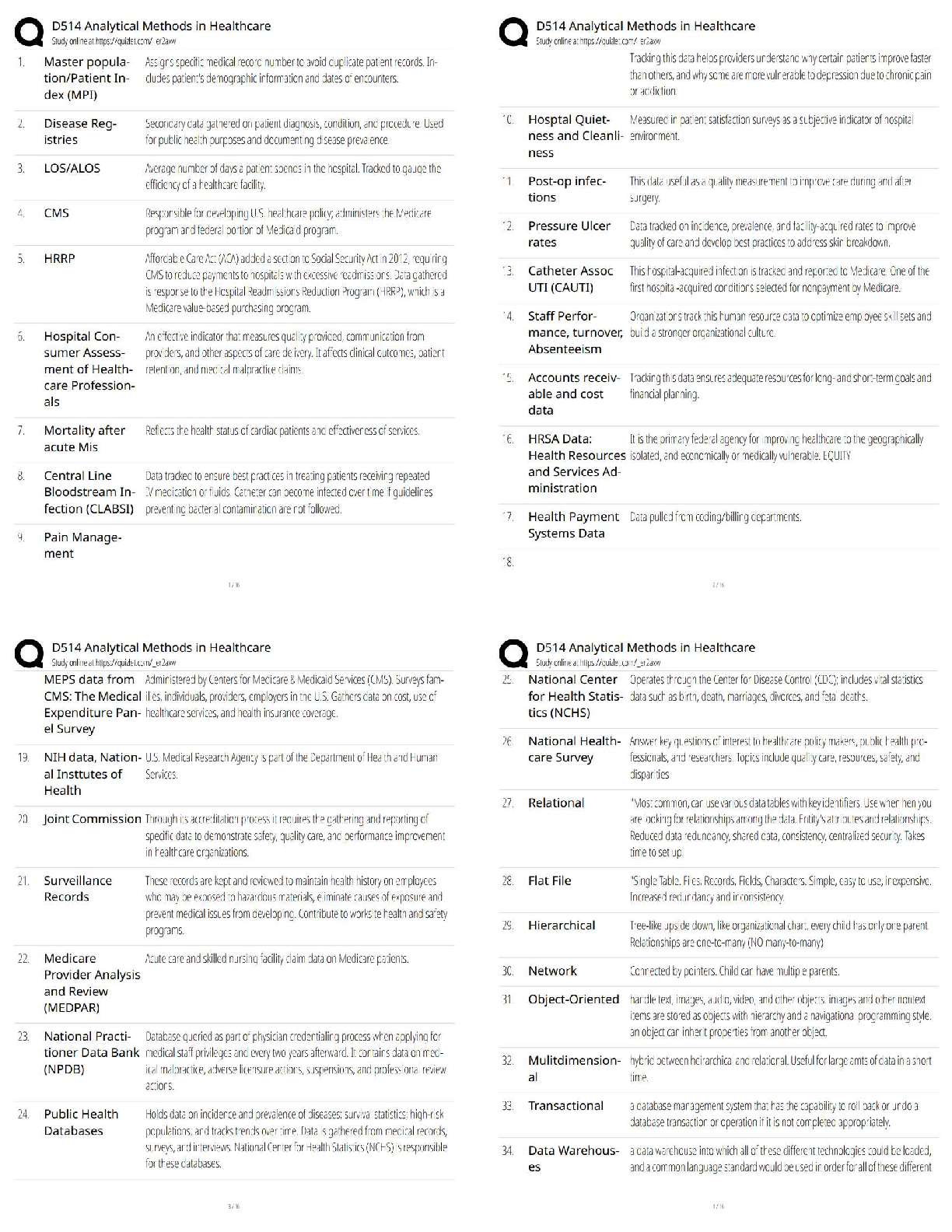*NURSING > QUESTIONS and ANSWERS > ATI CBC Semester 2 Study Guide | Contains 321 Explained Terms, Definitions and Explanations. See Sam (All)
ATI CBC Semester 2 Study Guide | Contains 321 Explained Terms, Definitions and Explanations. See Samples in Description.
Document Content and Description Below
ATI CBC Semester 2 Study Guide 321 Terms in this set Pulse oximeter a device with a sensor probe that attaches securely to the fingertip, toe, bridge of nose, earlobe, or forehead with a clip or ... band What do pulse oximeters do? Measure pulse saturation (SpO2) via a wave of infrared light that measures light absorption by oxygenated and deoxygenated hemoglobin in arterial blood. SpO2 reliably reflects the percent of saturation of hemoglobin when then SaO2 is greater than 70%. Oxygen a tasteless and colorless gas that accounts for 21% of atmospheric air Oxygen flow rates vary to maintain an SpO2 of 95% to 100% using the lowest amount of oxygen to achieve the goal without risking complications Fraction of inspired oxygen (FIO2) the percentage of oxygen the client receives When would you use pulse oximetry? When assessment findings include increased work of breathing, wheezing, coughing, cyanosis, changes in respiratory rate or rhythm, adventitious breath sounds, restlessness, irritability, confusion2/27 Interventions for pulse oximetry readings less than 90% (indicating hypoxemia) Confirm probe placement Confirm that the oxygen delivery system is functioning and that the client is receiving the prescribed oxygen levels. Place the client in semi-Fowler's position promote chest expansion and to maximize ventilation. Encourage deep breathing Remain with the client and provide emotional support to decrease anxiety. Interpretation of pulse oximetry findings The expected range is 95%-100%. Acceptable levels range from 91%-100%. Some illness states can allow for 85%-89%. Readings less than 90% reflect hypoxemia. Values can be slightly lower for older adult clients and clients who have dark skin. Additional reasons for low readings include hypothermia, poor peripheral blood flow, too much light (sun, infrared lamps), low hemoglobin levels, jaundice, movement, edema, nail polish. Oxygen therapy Oxygen is a therapeutic gas that treats hypoxemia (low levels of arterial oxygen). Administering and adjusting it requires a prescription Early manifestations of hypoxemia Tachypnea, tachycardia, restlessness, anxiety, confusion, pale skin, mucous membranes, elevated blood pressure, use of accessory muscles, nasal flaring, tracheal tugging, adventitious lung sounds Late manifestations fo hypoxemia Stupor, cyanotic skin, mucous membranes, bradypnea, bradycardia, hypotension, cardiac dysrhythmias3/27 Oxygen therapy nursing actions Monitor respiratory rate and pattern, level of consciousness, SpO2, and arterial blood gases. Provide oxygen therapy at the lowest liter flow that will correct hypoxemia. Make sure the mask creates a secure seal over the nose and mouth. Assess/monitor hypoxemia and hypercarbia (elevated levels of CO2): restlessness, hypertension, and headache. Auscultate the lungs for breath sounds and adventitious sounds such as crackles and wheezes. Assess/monitor oxygenation status with pulse oximetry and arterial blood gases (ABGs). Promote oral hygiene. Encourage turning, coughing, deep breathing, and the use of incentive spirometry and suctioning. Promote rest and decrease environmental stimuli. Provide emotional support. Assess nutritional status. Provide supplements. Assess skin integrity. Provide moisture and pressure-relief devices. Assess and document the response to oxygen therapy. Titrate oxygen to maintain the recommended oxygen saturation. Discontinue supplemental oxygen gradually. Monitor for respiratory depression (decreased respiratory rate and level of consciousness). Low-flow oxygen delivery systems deliver varying amount of oxygen based on the delivery method and the client's breathing pattern. Nasal cannula tubing with two small prongs for insertion into the nares Nasal cannula fraction of inspired oxygen Delivers 24%-44% at a flow rate of 1 to 6 L/min4/27 Nasal cannula advantages Safe, simple, and easy-to-apply Comfortable and well-tolerated Client is able to eat, talk, and ambulate Nasal cannula disadvantages The FiO2 varies with the flow rate and rate and depth of the client's breathing Extended use can lead to skin breakdown and dry mucous membranes Tubing is easily dislodged Nasal cannula nursing actions Assess the patency of the nares Ensure that the prongs fit in the nares properly Use water-soluble gel to prevent dry nares Provide humidification for flow rates fo 4 L/min Simple face mask Covers the client's nose and mouth Simple face mask FiO2 40%-60% at flow rates of 5 to 8 L/min Minimum flow rate is 5 L/min to ensure flushing of CO2 from the mask Simple face mask advantages Easy to apply and can be more comfortable than a nasal cannula Simple delivery method More comfortable than a nasal cannula Provides humidified oxygen Simple face mask disadvantages Flow rates less than 5 L/min can result in rebreathing of CO2 Clients who have anxiety or claustrophobia do not tolerate it well Eating, drinking, and talking are impaired Moisture and pressure can collect under the mask and cause skin breakdown5/27 Simple face mask nursing actions Assess proper fit to ensure a secure seal over the nose and mouth Make sure the client wears a nasal cannula during meals Use with caution for clients who have a high risk of aspiration or airway obstruction Monitor for skin breakdown Partial rebreather mask covers the client's nose and mouth Partial rebreather mask FiO2 40%-70% at flow rates of 6 to 10 L/min Partial rebreather mask advantages The mask has a reservoir bag attached with no valve, which allows the client to rebreathe up to 1/3 of exhaled air together with room air Partial rebreather mask disadvantages Complete deflation of the reservoir bag during inspiration causes CO2 buildup ::::::::::::::::::::::::::::::::::::::::CONTENT CONTINUED IN THE ATTACHMENT::::::::::::::::::::::::::::::::::::::::::::::::::: [Show More]
Last updated: 1 year ago
Preview 4 out of 27 pages

Loading document previews ...
Buy this document to get the full access instantly
Instant Download Access after purchase
Buy NowInstant download
We Accept:

Reviews( 0 )
$9.00
Can't find what you want? Try our AI powered Search
Document information
Connected school, study & course
About the document
Uploaded On
Apr 18, 2021
Number of pages
27
Written in
All
Additional information
This document has been written for:
Uploaded
Apr 18, 2021
Downloads
0
Views
164

